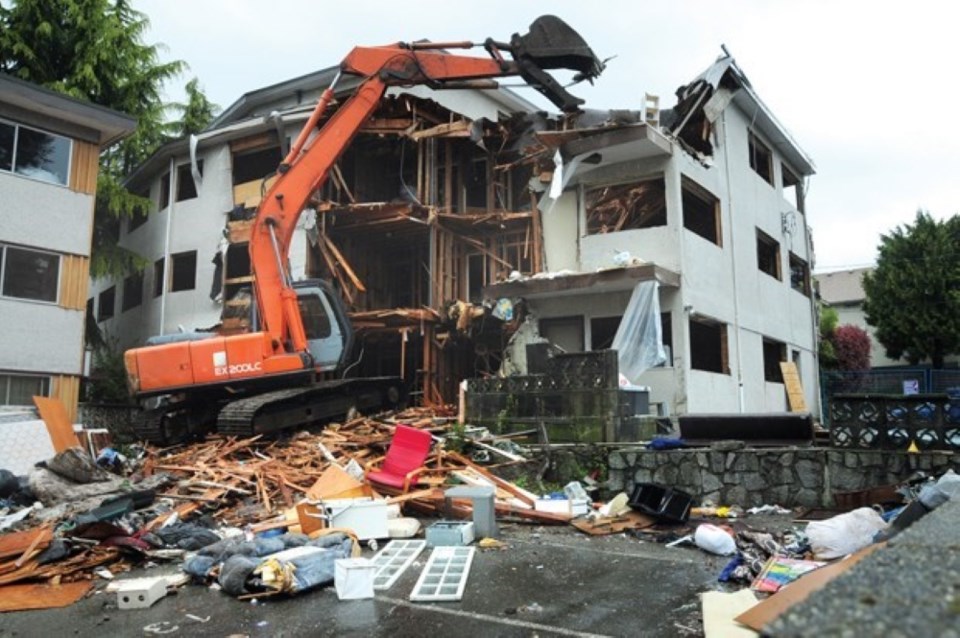Factors making it increasingly harder for young people and working families to live in the District of North Vancouver are getting plenty of airtime ahead of this month’s local election. The latest round of census data offers a sobering look into the monumental task ahead of policymakers hoping to turn the tide.
Over the past 20 years, the district’s population has aged significantly. From 2001 to 2021, the total headcount rose by 5,855 (seven per cent) to 88,168.
During that period, the 25-44 age cohort dropped 14 per cent (to 3,120), while the over-85 group spiked 137 per cent (to 1,310). Every age group under-55 has fallen, while every group 55-and-older has risen.
In comparison, core demographics have boomed in the adjacent City of North Vancouver. There, the 25-44 group has ballooned by 15 per cent (to 16,400). The city’s overall population has grown 31 per cent (to 58,120), while those 85 and older have risen by 83 per cent (to 1,315).
In West Vancouver, the district has lost nine per cent of its 25- to 44-year-olds (now 7,165) and its over-85 group has grown by 83 per cent (to 2,375).
Andy Yan, director of SFU’s City Program, likens analyzing what could cause major demographic changes to a game of Clue: look around at the table of suspects.
“It may not be just a single suspect – it’s a conspiracy, it’s all of them,” he said. “It’s housing affordability, it’s demographics, it’s the economy.
“It’s how they all have come together to produce the image of what the District of North Van is right now. And the consequences of the actions or inactions of previous civic governments,” Yan continued.
According to Yan’s analysis of 2016 data, 64 per cent of the North Vancouver District’s workforce commutes into the municipality. Conversely, over three-quarters of workers living in the district travel elsewhere for work.
In the run-up to the Oct. 15 election, several candidates are calling traffic congestion the number-one issue. When it comes to mode of transportation, nearly three-quarters of people drive themselves to work in the district, compared to 14 per cent by transit.
When it comes to housing in the district, 79 per cent of residents are homeowners while 21 per cent rent, compared to Metro averages of 64 per cent and 36 per cent. Ownership is concentrated in areas like Riverside West (96 per cent), Grousewoods (95 per cent) and Upper Lynn (89 per cent). Rentership is high in Maplewood Village Centre (69 per cent), Lynn Valley Town Centre (60 per cent) and Lions Gate (56 per cent).
Housing stock in the district skews heavily toward detached homes. As of 2021 data, nearly half of occupied private dwellings are single-detached houses, over a quarter are classified as “other ground-oriented housing,” 14 per cent are apartments in less-than-five-storey buildings and 9 per cent in higher towers.
Stock in the City of North Vancouver is almost a mirror image, dominated by towers (28 per cent) and smaller apartments (38 per cent), with fewer single-detached (11 per cent) and other ground-oriented homes (23 per cent).
From 2016-2021, the district’s total population grew three per cent, compared to the Metro average of seven per cent. Residential construction was also slower, with a five-per-cent rise in new dwellings compared to seven per cent in Metro.
Yan said this data can be used by policymakers as a guide, to remedy problems over a series of years with actions that start today.
“Something like the issue of housing isn’t only, say, the production of studio and one-bedroom units, but how and where [to locate] affordable, family-size housing in a place like the district that’s costing as much as what local incomes can support.”




